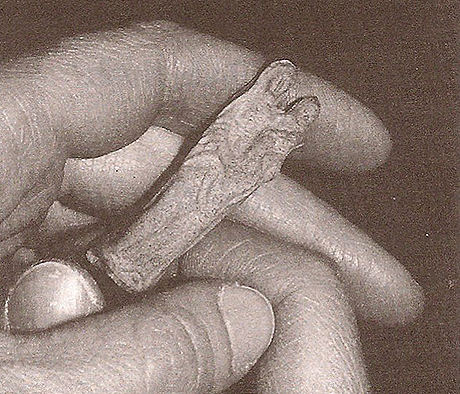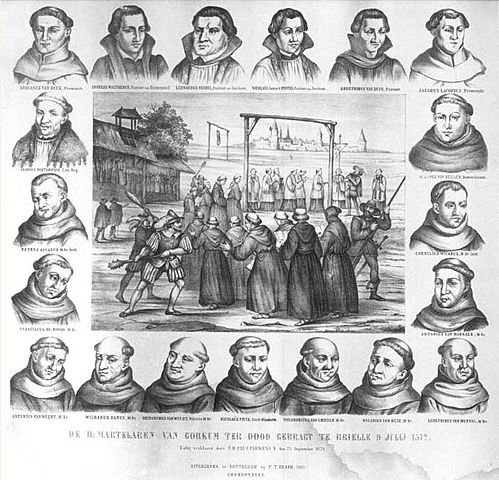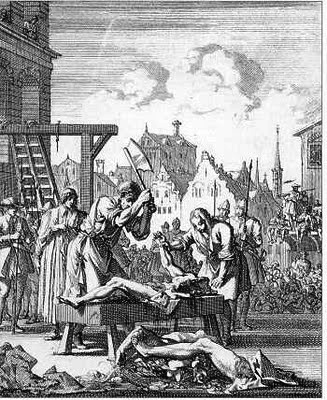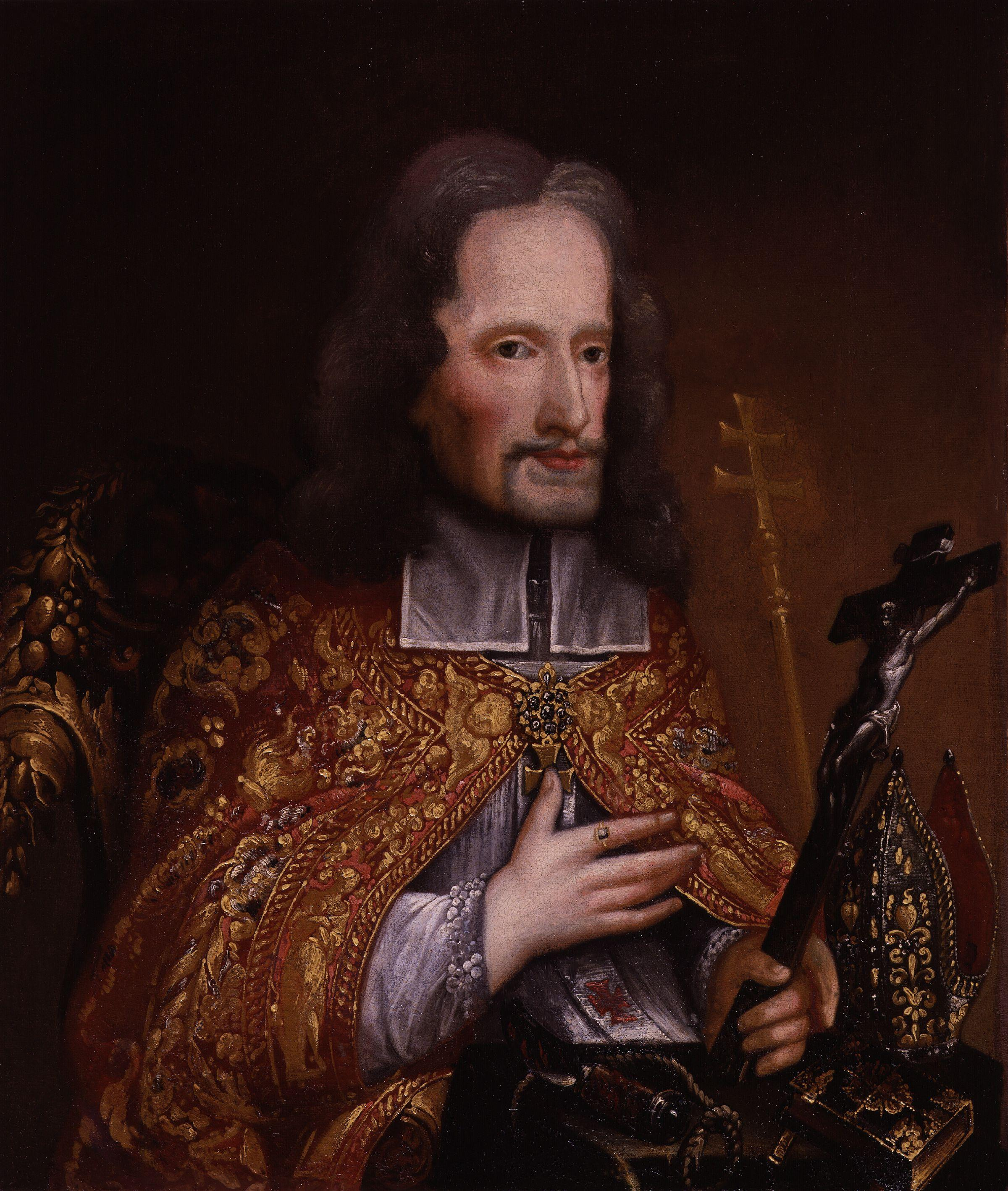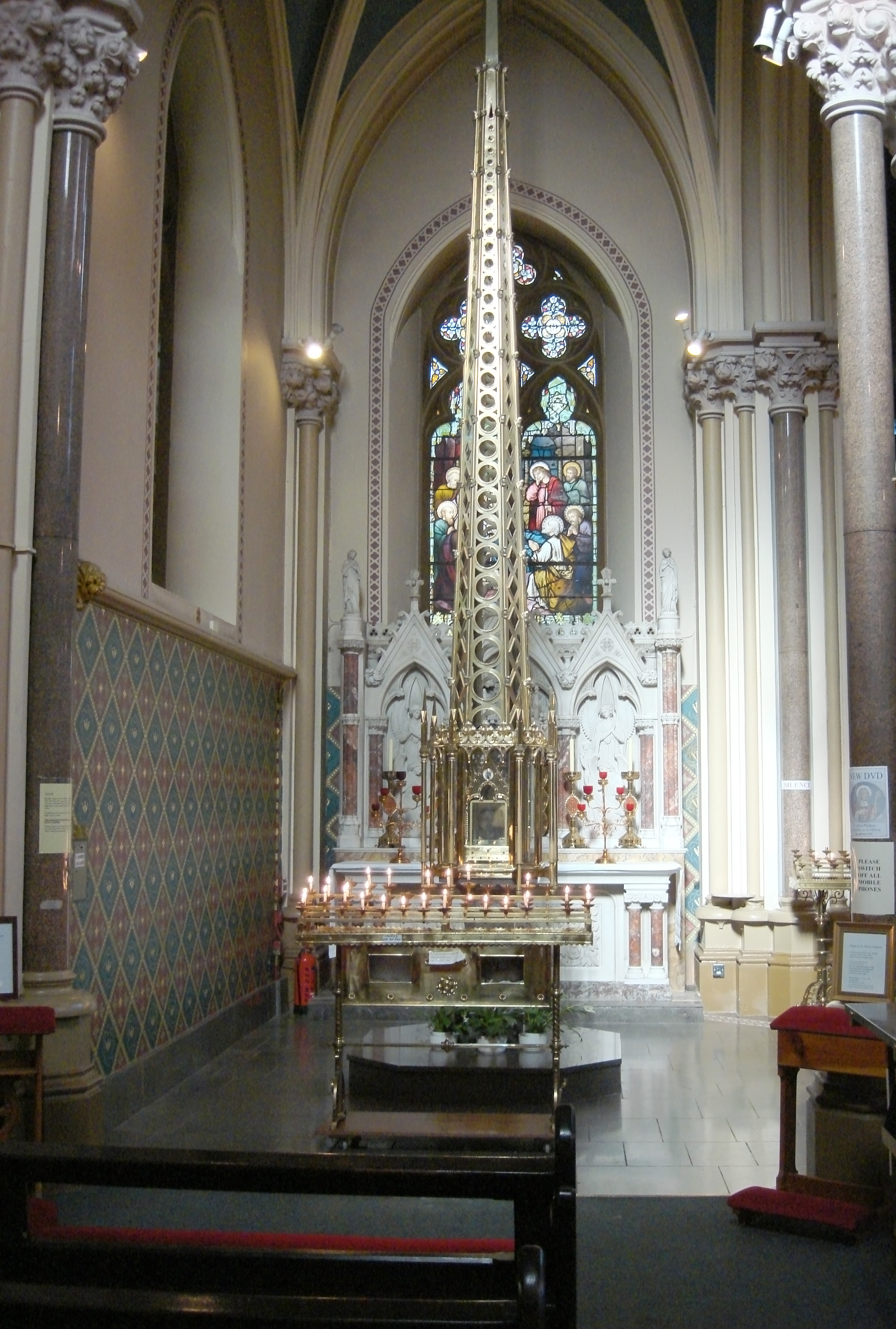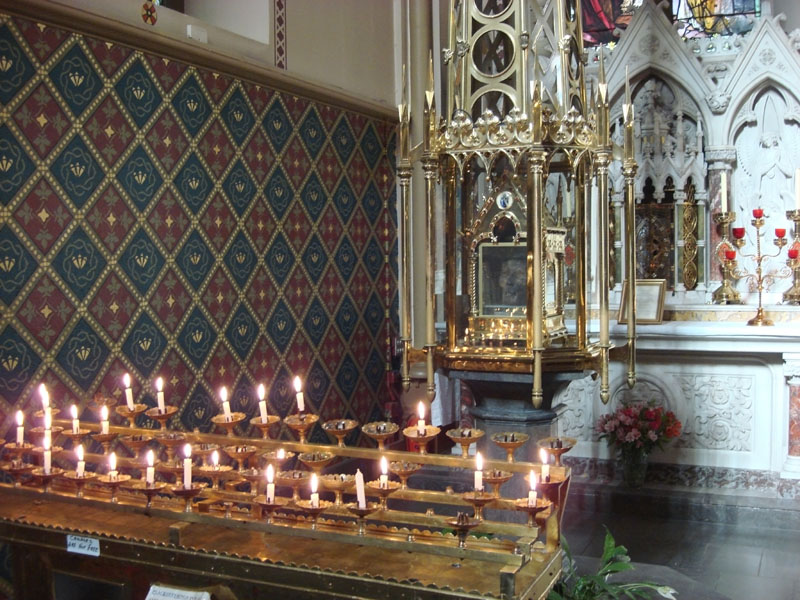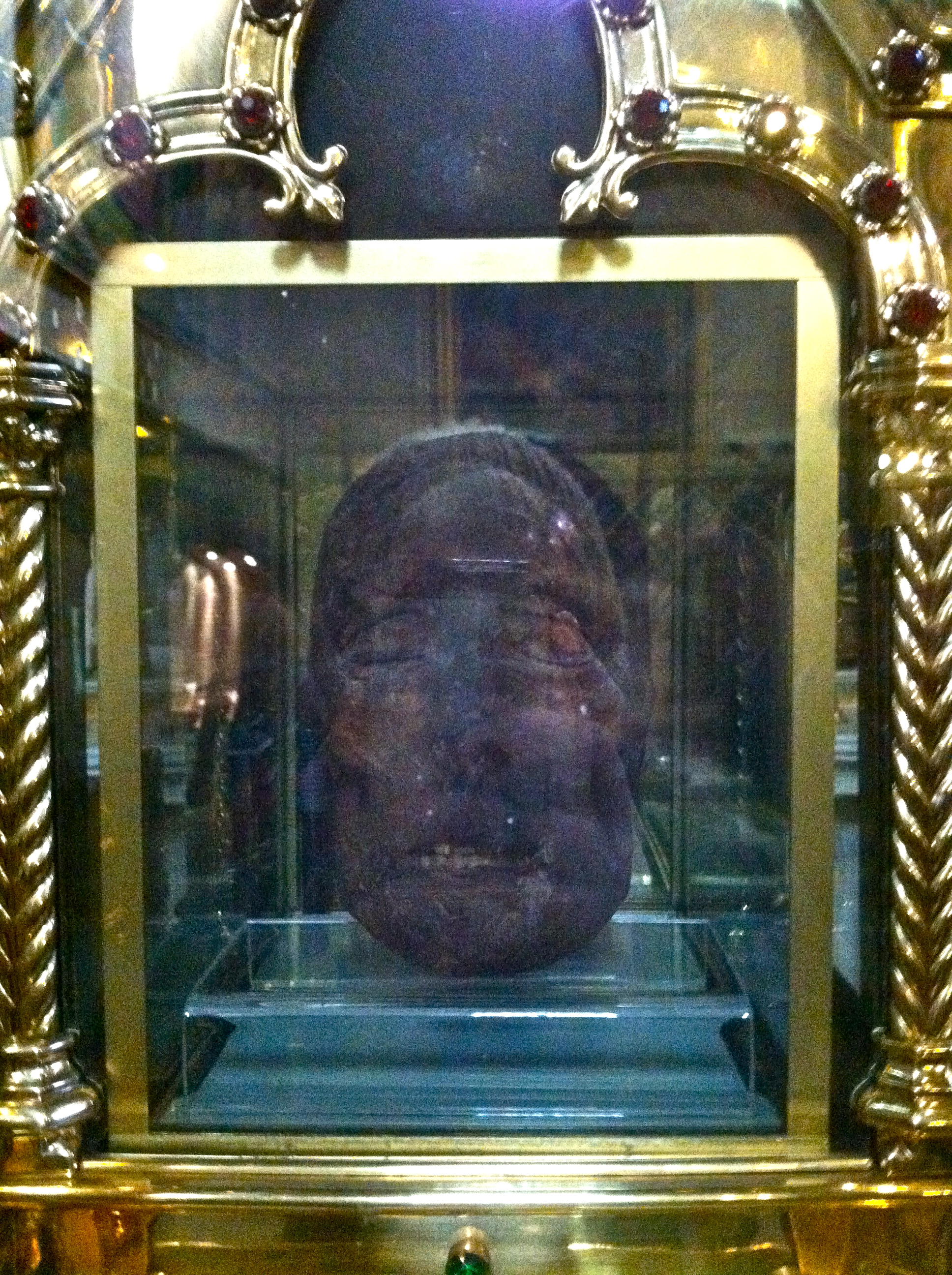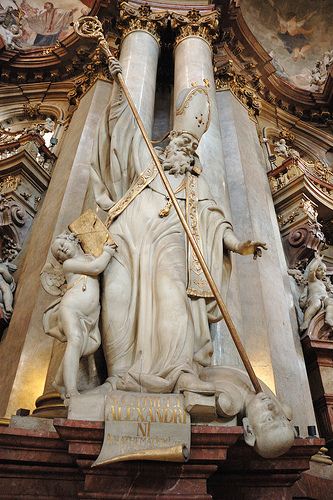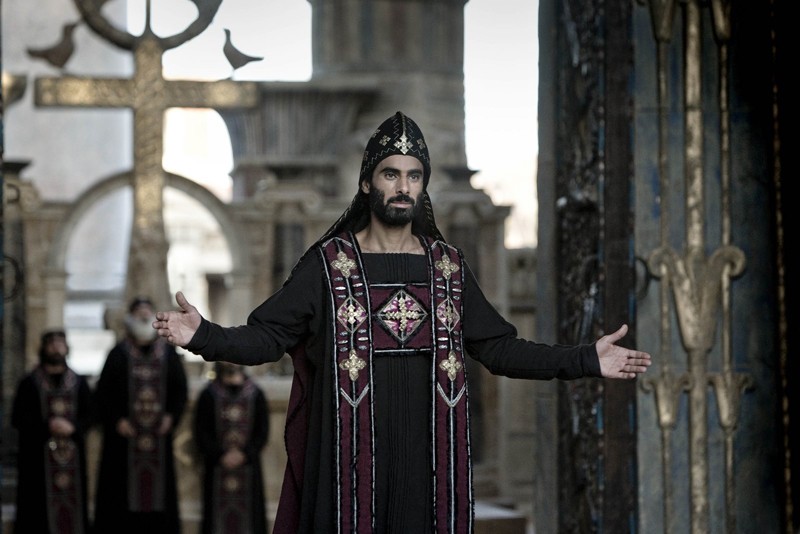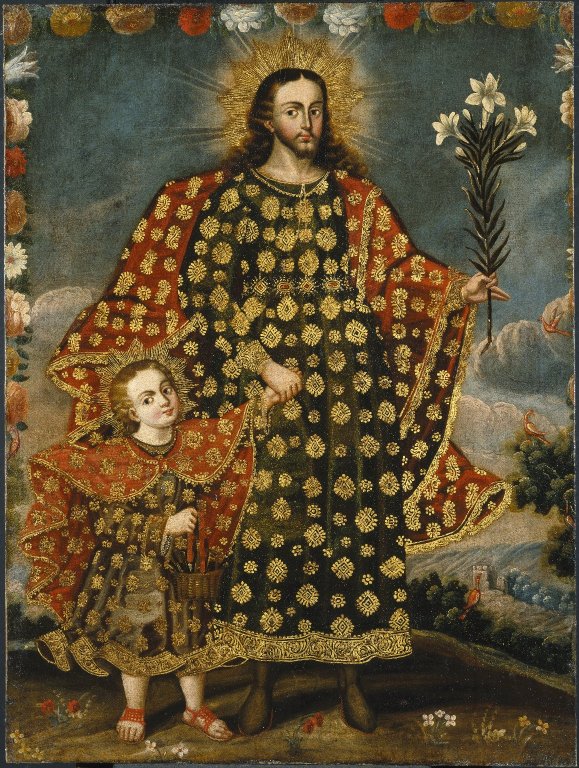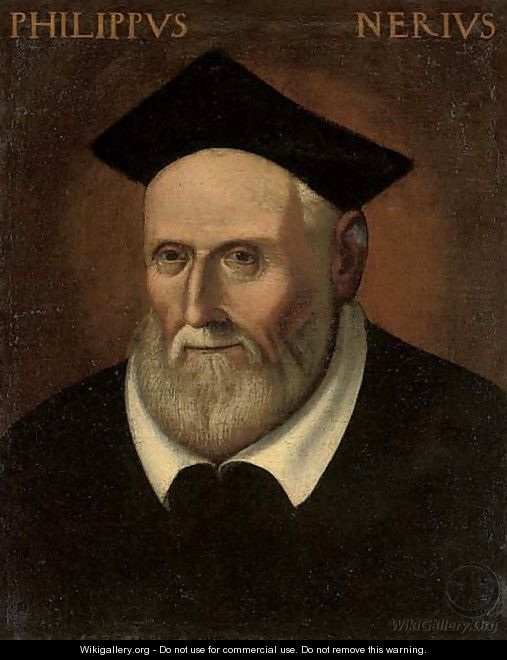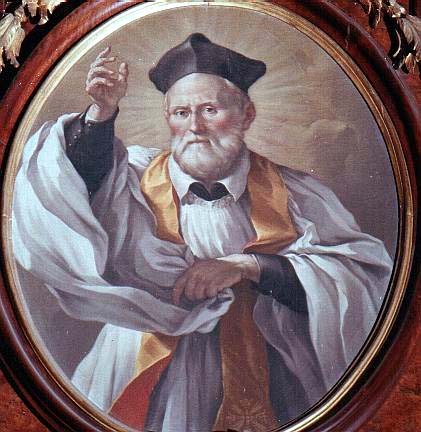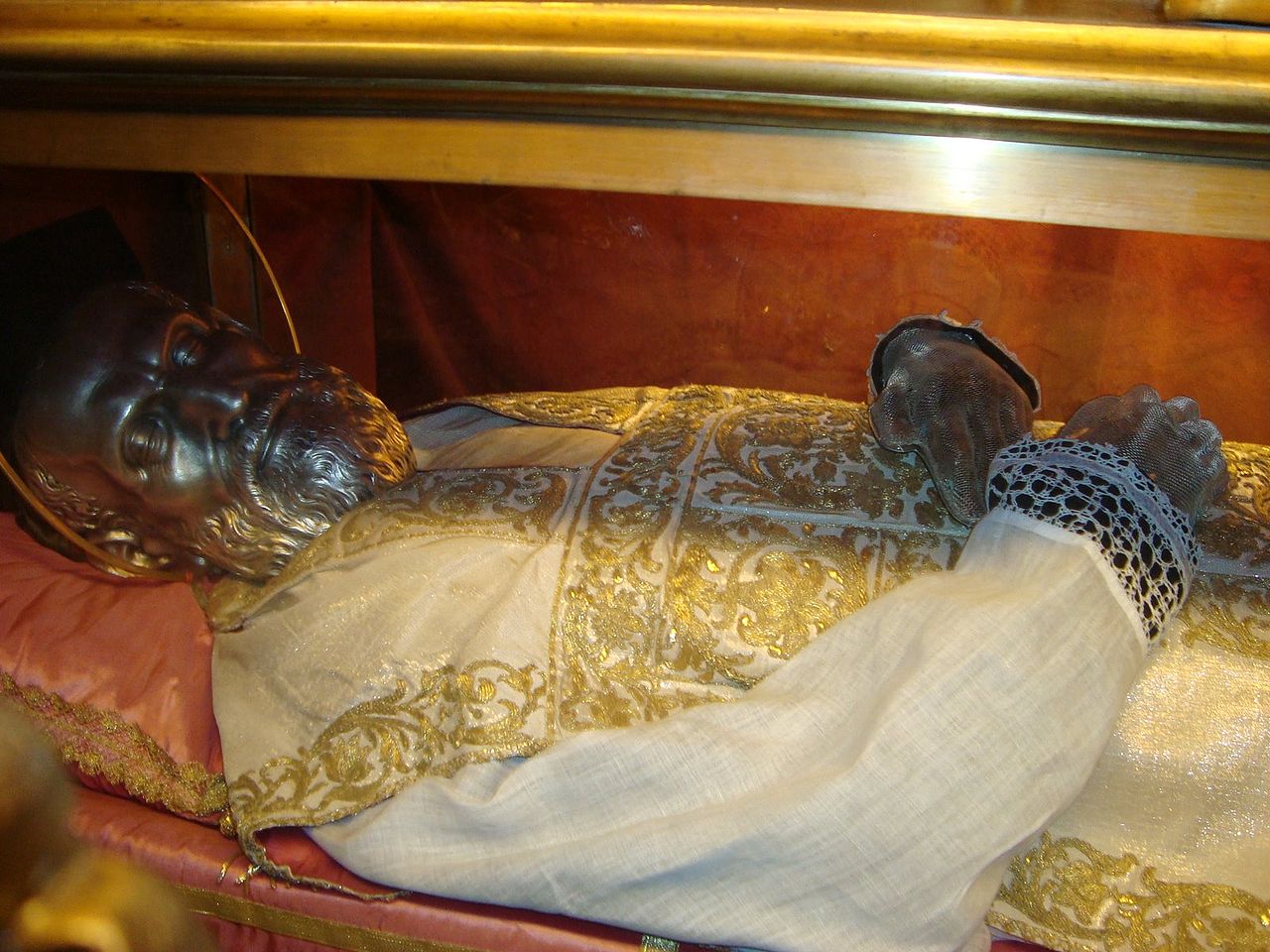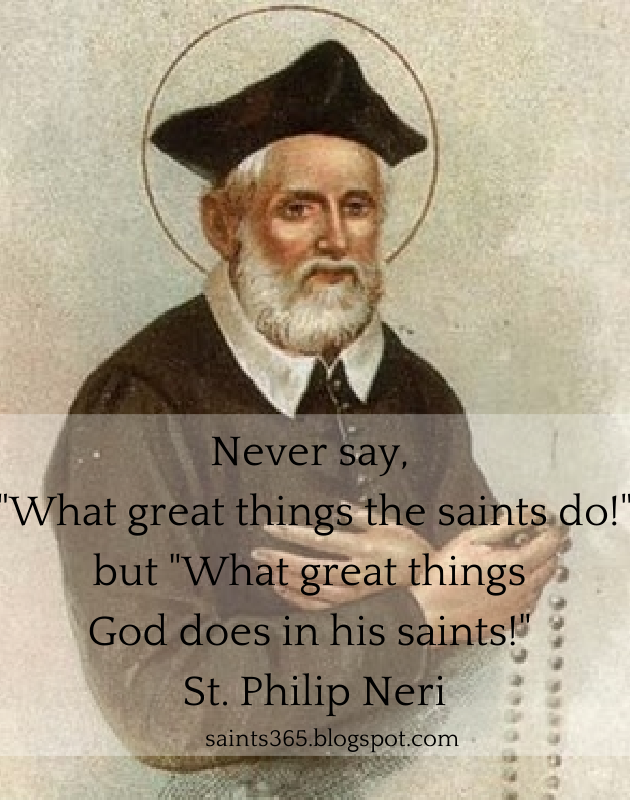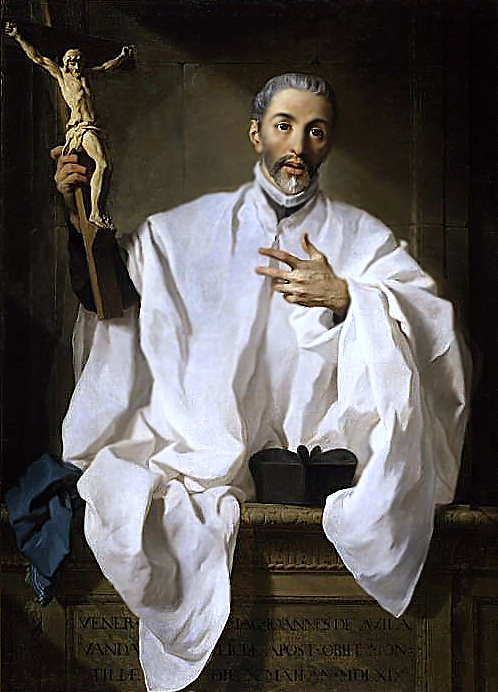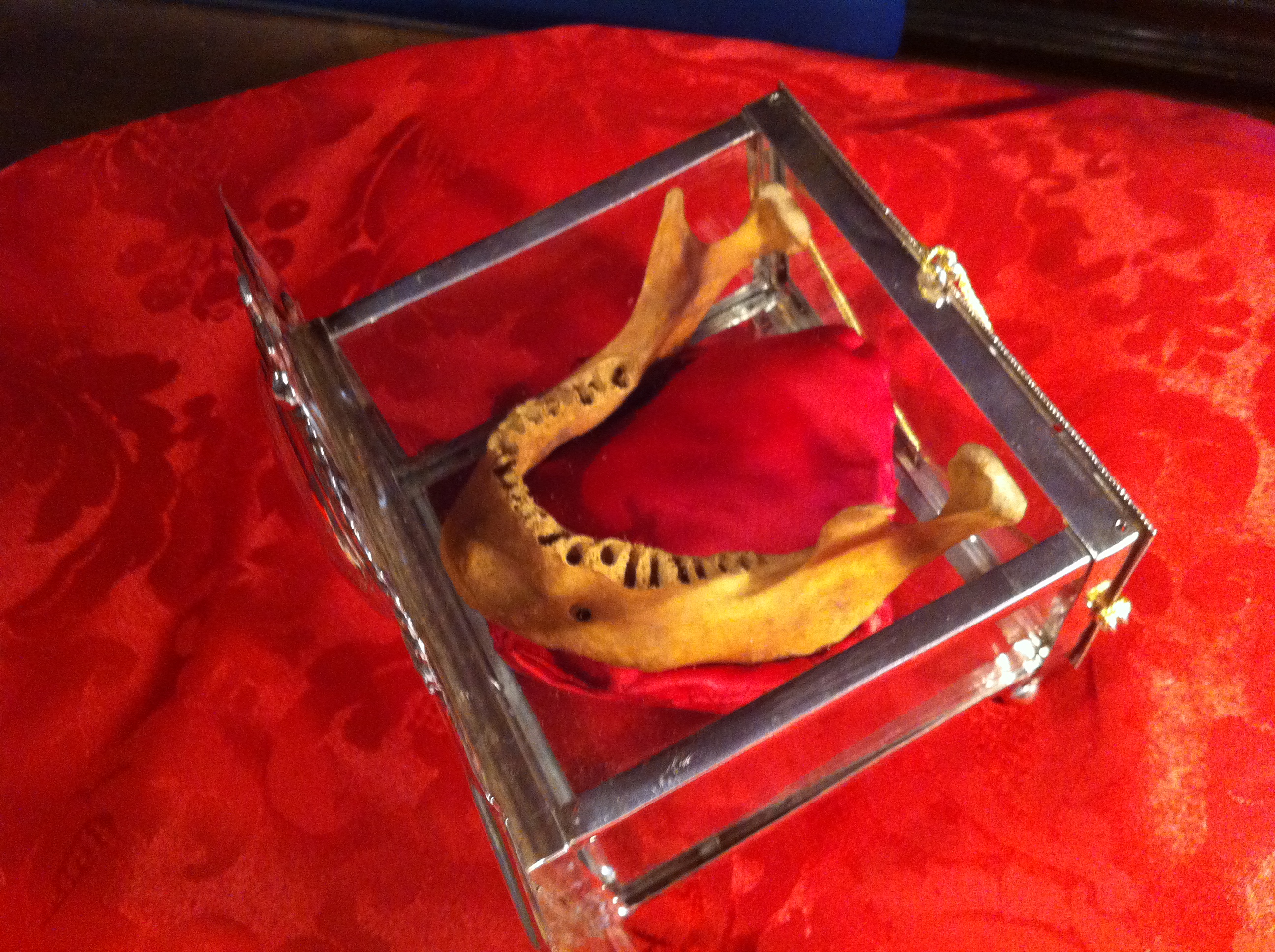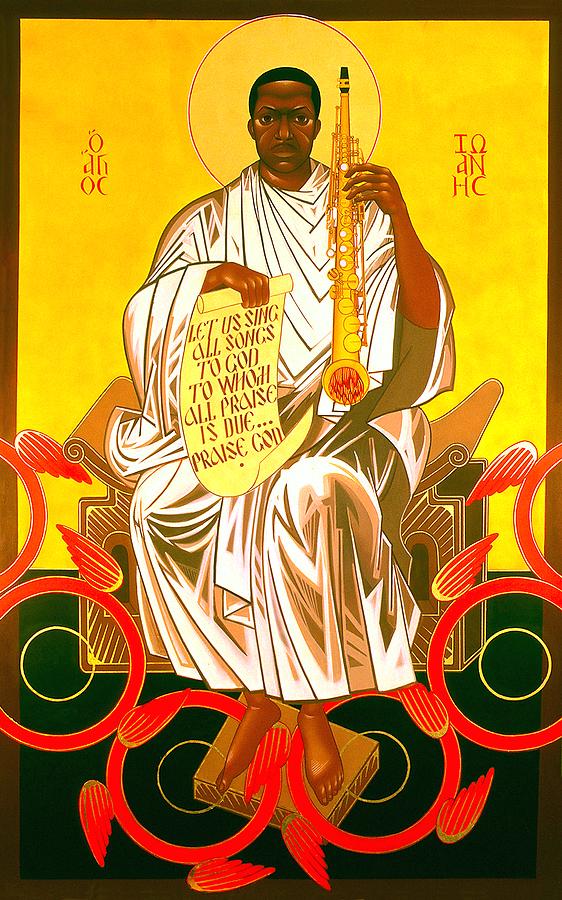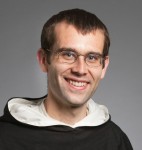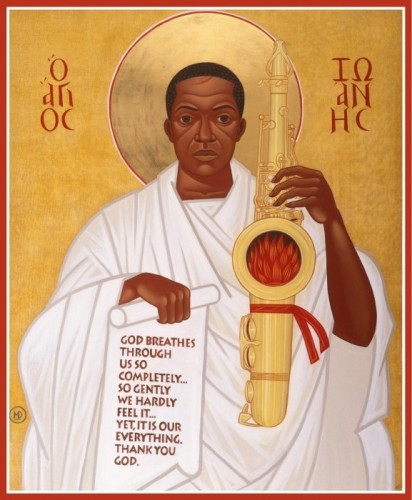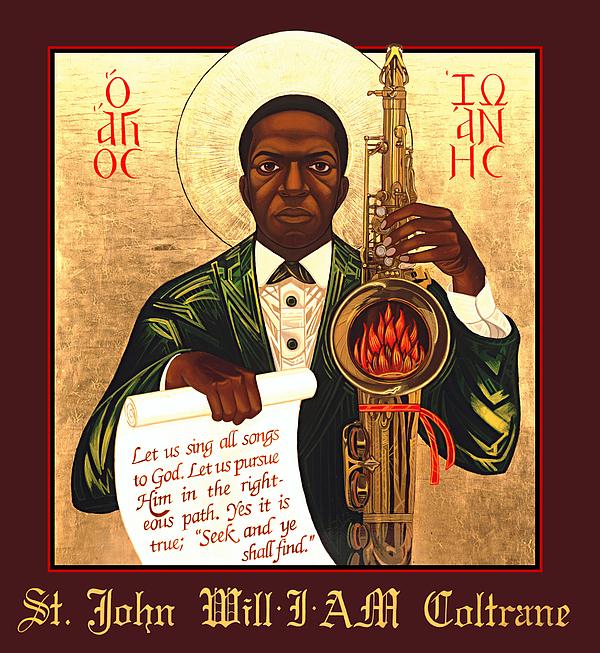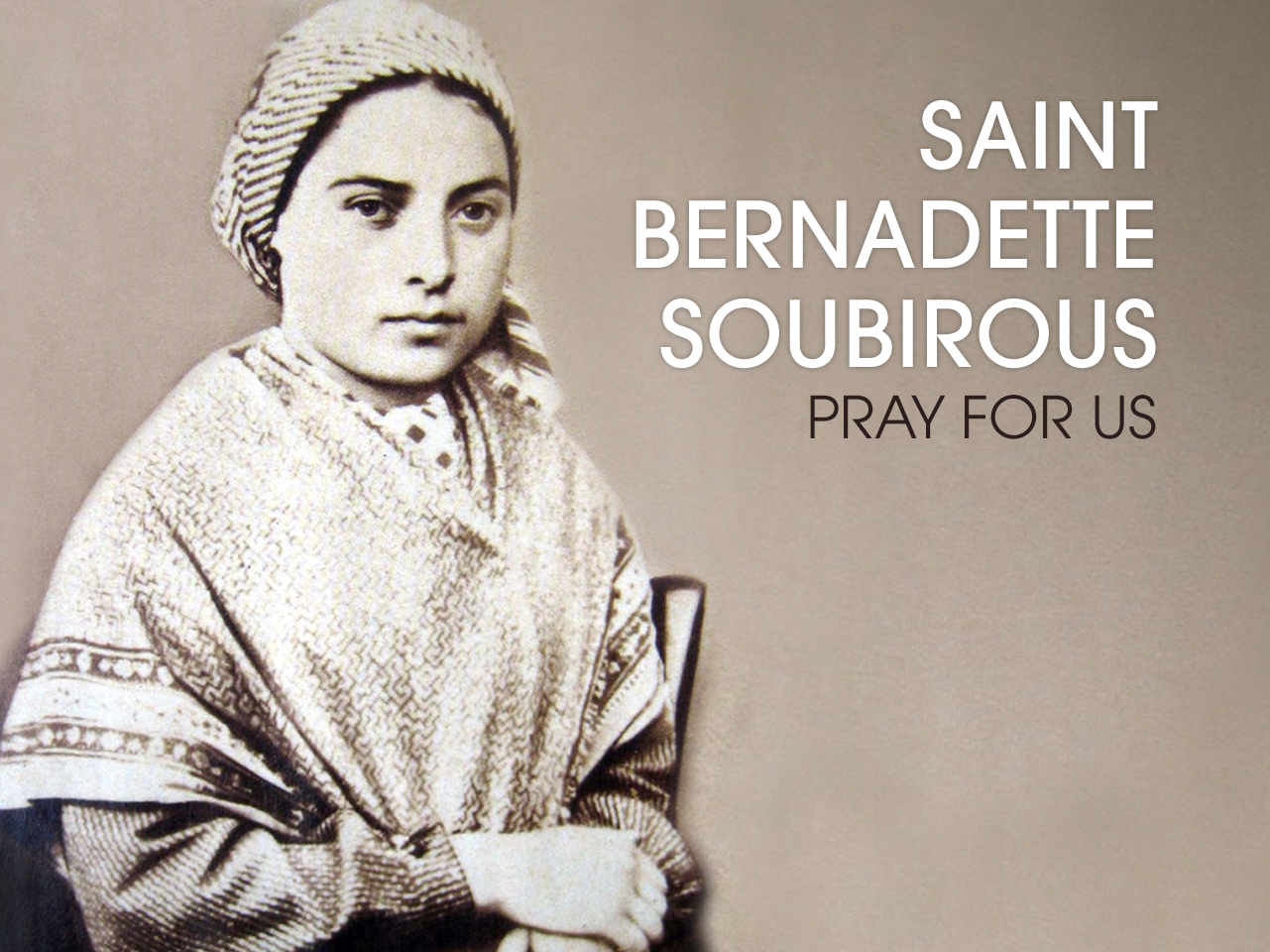Veni Creator Spiritus
– as sung at the opening of the recent conclave to elect our new Holy Father, Francis.
Come, Holy Ghost, Creator blest,
and in our hearts take up Thy rest;
come with Thy grace and heav’nly aid,
To fill the hearts which Thou hast made.
O Comforter, to Thee we cry,
Thou heav’nly gift of God most high,
Thou Fount of life, and Fire of love,
and sweet anointing from above.
O Finger of the hand divine,
the sevenfold gifts of grace are thine;
true promise of the Father thou,
who dost the tongue with power endow.
Thy light to every sense impart,
and shed thy love in every heart;
thine own unfailing might supply
to strengthen our infirmity.
Drive far away our ghostly foe,
and thine abiding peace bestow;
if thou be our preventing Guide,
no evil can our steps betide.
Praise we the Father and the Son
and Holy Spirit with them One;
and may the Son on us bestow
the gifts that from the Spirit flow.
There was something eerie in the air as the tumbrils passed through the streets of Paris that led to Place du Trône Renversé. It was, in fact, too eerie that the normally noisy and violent crowd was “in a respectful silence such as has never been accorded throughout the Revolution.” No rotten fruit was pelted and no clamorous insult was raised on the condemned women and men. That evening one only heard the ethereal chanting of sixteen Discalced Carmelite nuns on their way to death.
These women could hardly be recognized as nuns. Wrapped in their white mantles, they did not, however, wear their veils. Their wimples had been cut away, exposing their necks to facilitate the truculent job of the guillotine’s blade.
At around eight in the evening, after a ride of two hours, the tumbrils finally arrived at the place of execution. A horrid stench of rotting flesh from the common graves in nearby Picpus and of putrifying blood beneath the scaffold greeted them. The crowd remained reverently silent. The Carmelites have finally come face to face with the dreaded guillotine. Led by their courageous prioress, Mo. Thérèse of St. Augustine, they sang the Te Deum: “You are God: we praise You; You are the Lord: we acclaim You; You are the eternal Father: all creation worships You…. The glorious company of apostles praises You. The noble fellowship of prophets praises You. The white-robed army of martyrs praises You…
Included were:
Mother Thérèse of St. Augustine (Marie-Madeleine-Claudine Lidoine; b. 22 September 1752 in Paris), a woman “so loved by God,” was serving her second term as prioress when the Revolution struck. Her correspondences reveal a woman of great human and supernatural qualities.
Mother St. Louis (Marie-Anne-Françoise Brideau; b. 07 December 1751 in Belfort), the sub-prioress, was given to silence and gentleness. She celebrated the divine office with admirable remembrance and exactitude.
Mother Henriette of Jesus (Marie-Françoise de Croissy;b. 18 June 1745 in Paris), the novice mistress, was the predecessor of Mother Thérèse. She “made herself esteemed for the qualitites of her heart, her tender piety, zeal, the happy combination of every religious virtue.”
Sr. Charlotte of the Resurrection (Anne-Marie-Madeleine Thouret;b. 16 September 1715 in Mouy, Oise), the most senior member of the community, possessed a lively temperament. Fond of frequenting balls in her youth, she entered Carmel “after a tragic event.”She served as infirmarian to the point of developing a spinal column deformation that she endured until death.
Sr. of Jesus Crucified (Marie-Anne Piedcourt; b. 09 December 1715 in Paris) was younger than Sr. Charlotte by a few months but was senior to her by profession. She occupied the office of sacristan for many years.Speaking about their persecutors, she said: “How can we be angry with them when they open the gates of heaven for us?”
Sr. Thérèse of the Heart of Mary (Marie Hanisset; b. 18 January 1742 in Reims), first sister of the turn and third bursar, was endowed with wisdom, prudence and discernment.
Sr. Thérèse of St. Ignatius (Marie-Gabrielle Trezel; b. 04 April 1743 in Compiègne), the “hidden treasure” of the community, was undoubtedly a mystic. Asked why she never brought a book for meditation, she replied: “The good God has found me so ignorant that none but He would be able to instruct me.”
Sr. Julie-Louise of Jesus (Rose Cretien de Neuville; b. 30 December 1741 in Evreux) entered Carmel as a widow. She dreaded the guillotine but she chose to stay with her sisters.
Sr. Marie-Henriette of Providence (Marie-Annette Pelras; b. 16 June 1760 in Cajarc, Lot), the assitant infirmarian, first entered the Sisters of Charity and Christian Instruction of Nevers but left it for the more secluded Carmelite life. Youngest among the choir nuns, she possessed a most exquisite beauty.
Sr. Euphrasie of the Immaculate Conception (Marie-Claude-Cyprienne Brard; b. 12 May 1736 in Bourth, Eure),the “philosopher” and “joie de vivre of the recreation,”admitted that she was filled for some time with resentment against her prioress. She worked very hard on herself that in the end she was able to overcome her negative disposition.
Along with these ten choir nuns were three lay sisters. Sr. Marie of the Holy Spirit (Angélique Roussel; b. 03 August 1742 at Fresne-Mazancourt, Somme) was afflicted by atrocious pains throughout her body, which she heroically bore up until her death. Sr. St. Martha (Marie Dufour, b 02 October 1741 at Bannes, Sarthe) edified her companions with her virtues. Sr. St. Francis Xavier (Elisabeth-Juliette Vérolot; b. 13 January 1764 at Lignières, Aube) was frank, lively, and full of goodness.
The youngest member of the community was Sr. Constance(Marie-Geneviève Meunier; b. 28 May 1765 at Saint Denis, Seine)Circumstances forced her to remain as a novice for seven years. Her parents wanted her to return home and even sent the police for this purpose. Sr. Constance told them: “Gentlemen, I thank my parents if, out of love, they fear the danger that may befall me. Yet nothing except death can separate me from my mothers and sisters.”
The two tourières were blood sisters. Anne-Catherine Soiron (b. 02 February 1742 in Compiègne)tearfully begged the prioress not to let her and her sister be separated from the community during those crucial hours. Thérèse Soiron,(b. 23 January 1748 in Compiègne) possessed such a rare beauty and charming personality that the ill-fated Princess de Lamballe wanted her to be attached to her court. She responded: “Madame, even if your Highness would offer me the crown of France, I would prefer to remain in this house, where the good God placed me and where I found the means of salvation which I would not find in the house of your Highness.”
On 12 July 1790, the National Assembly implemented the Civil Constitution of the Clergy. Among its articles was a provision for the suppression of the monastic orders and the liberation of monks and nuns who would choose to renounce their vows. On 15 August, the members of the Directory of the Compiègne district came to the monastery to interrogate each nun and offer her liberty.
The unanimous reply of the religious was to remain and keep their vows. Some of the nuns made their declarations more vivid:
“For fifty-six years I have been a Carmelite. I desire to have the same number of years more to be consecrated to the Lord.” (Sr. of Jesus Crucified)
“I became a religious by my own will. I have made up my mind to go on wearing this habit, even if I have to purchase this joy with my own blood.” (Sr. Euphrasie)
“A good spouse desires to remain with her husband. I do not wish to abandon my spouse.” (Sr. Saint Francis Xavier)
“If I will be able to double the bonds of my attachment to God, then, with all my strength and zeal, I will do so.” (Sr. Thérèse of the Heart of Mary)
Another provision of the Civil Constitution of the Clergy required priests and religious to take a loyalty oath that required them “to be faithful to the nation, the law and the king; and to maintain the constitution with all their power.” What the ambiguous statement meant was that they were to give the revolutionary government the right to control and democratize the Church in complete disregard of Papal jurisdiction. Pope Pius VI issued on 10 March 1791 a condemnation of the Civil Constitution of the Clergy and forbade the clergy to take it. A schism was inevitable. The clergy was split between the “juring” (those who took the oath) and “non-juring” bishops and priests.
Two weeks after Easter of 1792, the guillotine was installed in Paris. Everyone was talking about it, even in the Carmel of Compiègne, and everyone feared it. In September, around 1,400 “enemies of the Republic” were killed during the infamous September Massacre; among them were hundreds of non-juring priests.
A belief that they would all be called to martyrdom someday prevailed in the community. Between June and September of that year, Mo. Thérèse proposed that the community offer their lives to God with an act of oblation “in order that the divine peace which Christ has brought to the world may be restored to the Church and to the State.” All promised to unite themselves to it, except for Sr. of Jesus Crucified and Sr. Charlotte of the Resurrection, the two most senior nuns. Trembling and fearful that they would end more than fifty years of peaceful life in Carmel with a bloody death, both withdrew from the community. Before the day ended, however, they prostrated themselves before the prioress and tearfully asked forgiveness for their momentary weakness. All the nuns renewed the act until the very day of their death.
The Final Choir
The journey was long… but the air was permeated by their solemn chants of the sixteen, hands tied behind their backs, singing as they did in choir: “Have mercy on me, God, in your kindness. In your compassion, blot out my offense…. Hail, holy Queen, mother of mercy….”
The guillotine had been standing for more than a month already at the Barrière du Trône. Upon arriving there, Sr. Constance suddenly accused herself before Mother Thérèse of not having finished her divine office. The prioress, told her: “Be strong, daughter.You will finish it in Paradise!”
At the foot of the scaffold, the prioress asked the executioner if she might die last so that she could encourage and support her sisters. She also asked for a few minutes to prepare them. This time her requests were granted. They sang once more, invoking the Holy Spirit: “Creator Spirit, come….” Afterward, they all renewed their religious vows.
One by one, from the youngest to the oldest, the nuns were called.
“Citizeness Marie Geneviève Meunier!”
Summoned by her real name, the youngest, Sr. Constance, knelt before Mother Thérèse and asked for her blessing and the permission to die.
Sr. Constance mounted the scaffold singing the psalm the nuns chanted daily to announce their coming into the house of God: “O praise the Lord, all you nations…”
Her sisters followed: “…acclaim Him, all you peoples! Strong is His love for us; He is faithful for ever.”
All the sisters followed the example of the youngest, asking their superior’s blessing and permission to die. They each went to their death joining the song of those waiting for their turn.While the blade of the guillotine snuffed their lives one by one, the chorus progressed into a decrescendo. As she ascended the scaffold, Sr. of Jesus Crucified was assisted by the assistants of the executioner.“My friends,” she told them, “I forgive you with all my heart, as I desire forgiveness from God.”
Finally, only one voice was left.
“Citizeness Marie Madeleine Claudine Lidoine!”
Having seen fifteen of her daughters precede her to the scaffold, Mother Thérèse followed them to the guillotine. At the sixteenth thud, there was nothing left… but silence. On that day, it was said, more than one religious vocation was born and just as many conversions took place.
-the tiny terra cotta Mother & Child statuette held by Madame Ledoine was kissed by all the nuns before the climbed the ladder up to the executioner.
Ten days later, amidst cacophonous shouts and screams, an infuriated and disillusioned crowd led a man to his death on the guillotine. “Down with the tyrant!” they cried. This time, it was the turn of Maximilien Robespierre. More than a week later, an enervated Antoine Fouquier-Tinville, the implacable Reign of Terror’s public prosecutor, followed his fate on the very instrument where he had sent hundreds to their death. The Terror consumed its own. And with the inglorious end of these two died, also, the Reign of Terror.
Guillotined on 17 July 1794 at the Place du Trône Renversé (modern Place de la Nation) in Paris, France, the sixteen, the heads and bodies of the martyrs were interred in a deep sand-pit about thirty feet square in a cemetery at Picpus. As this sand-pit was the receptacle of the bodies of 1298 victims of the Revolution, there seems to be no hope of their relics being recovered. Five secondary relics are in the possession of the Benedictines of Stanbrook, Worcestershire.
-plaque at the Picpus cemetery in memory of the 16 Martyrs of Compiègne
Prayer
Lord God, You called Bl. Teresa of St. Augustine, OCD, and her companions to go on in the strength of the Holy Spirit from the heights of Carmel to receive a martyr’s crown. May our love too be so steadfast that it will bring us to the everlasting vision of Your glory. We ask this through our Lord Jesus Christ, your Son, who lives and reigns with You and the Holy Spirit, one God, for ever and ever. Amen.
Lord our God, You called the 16 blessed Carmelites of Compiègne to show You the greatest testimony of love through the offering of their blood that “peace may be returned to the Church and to the State.” Remember the joyful and heroic fidelity with which they glorified You. May Your goodness manifest their favor with You, in granting through their intercession the grace (the miracle) that we ask You in the Hearts of Jesus and Mary. Through Jesus Christ, our Lord. Amen!
Love,
Matthew



